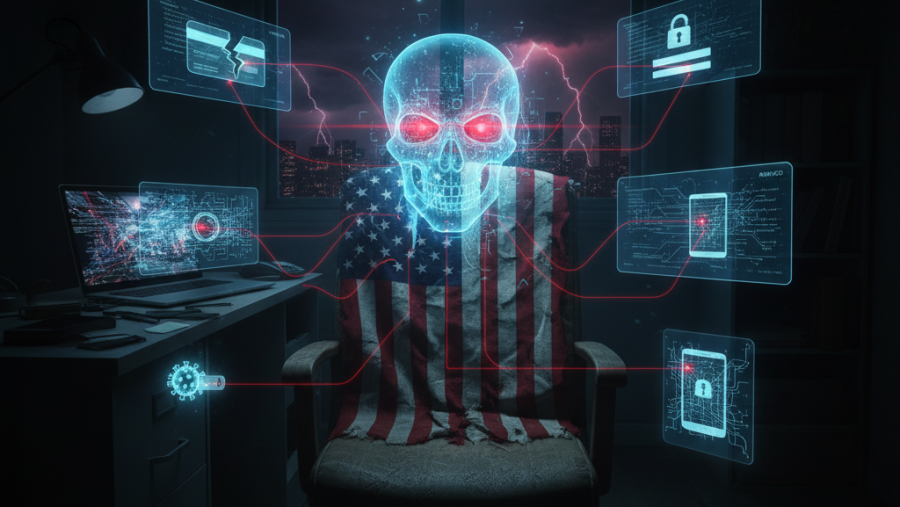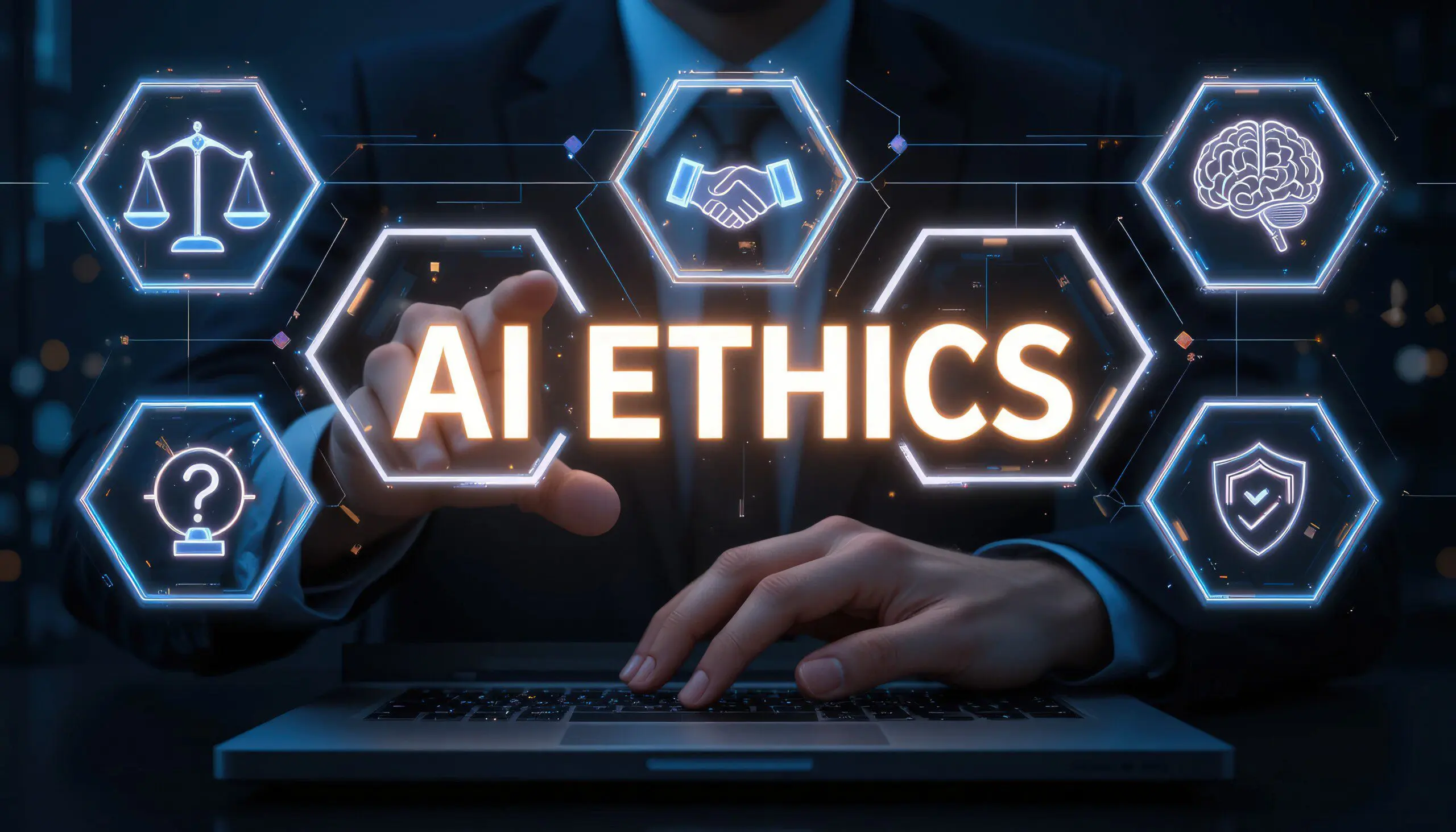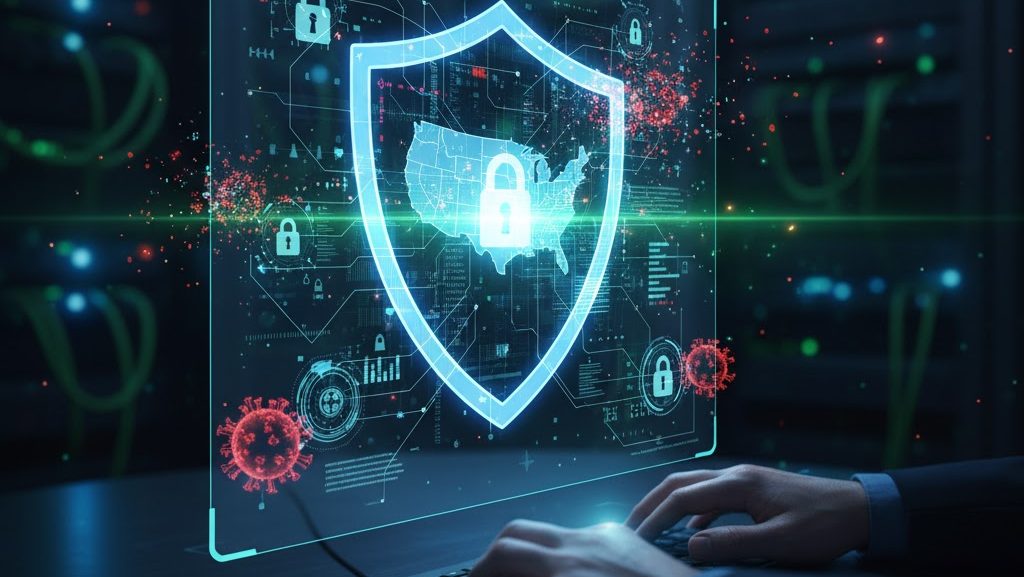In a world where much of our lives are online — banking, healthcare, work, socializing — cybersecurity is no longer an afterthought. Whether you’re an individual user, a small business owner, or an executive at a large organization, the risks are real, evolving, and ever-present. This article delves into the biggest cybersecurity threats facing Americans today, explains why they matter, and offers actionable strategies to help you stay safer in an uncertain digital landscape.
Why Cybersecurity Threats Demand Attention
- In 2024 alone, the FBI’s Internet Crime Complaint Center (IC3) reported over 859,532 complaints and losses exceeding $16 billion — a 33% increase from 2023. Federal Bureau of Investigation
- Over the past five years, the FBI logged 3.26 million cybercrime complaints in the United States, amounting to $27.6 billion in losses. SentinelOne+2USAFacts+2
- The average cost of a data breach in the U.S. is roughly $9.4 million. Astra Security+2SentinelOne+2
- Cybercrime is projected to cost the global economy trillions of dollars annually in the near future. vikingcloud.com+1
These numbers reflect not only direct financial damage but also reputational harm, regulatory fines, and the emotional toll on victims. Americans must stay informed and proactive about the biggest threats.
How Cyber Threats Are Evolving
Understanding the threat landscape is critical. Below is a snapshot of how cyberattacks are changing and what’s driving them:
- Rise of generative AI and automated tools: Attackers use AI to craft more convincing phishing messages, deepfakes, and social-engineering campaigns. University of San Diego Online Degrees+2arXiv+2
- Supply chain vulnerabilities: A weakness in a third-party vendor or software provider can cascade across many organizations. The 2023 MOVEit incident is a high-profile example. Wikipedia
- Highly Evasive Adaptive Threats (HEAT): These attacks evade traditional defenses by hiding in what appear to be benign web traffic, links, or files. Wikipedia
- Nation-state and advanced persistent threats (APTs): These actors conduct long-term, strategic attacks for espionage, disruption, or infrastructure sabotage. CISA+2reports.weforum.org+2
Given this dynamic environment, Americans must be vigilant across multiple fronts.
Top Cybersecurity Threats Americans Face Now
Here’s a breakdown of the most serious threats — the ones you, your family, or your business are likely to confront:
1. Phishing & Social Engineering
By far, phishing remains one of the most pervasive and effective attack vectors. Attackers trick users into revealing credentials, downloading malware, or initiating financial transfers.
- In U.S. tech executive surveys, 52% of respondents reported phishing attempts as their most common threat. talkerresearch.com
- Research in cognitive psychology shows that social engineering attacks exploit basic human decision heuristics — e.g., authority, urgency, reciprocity — making them surprisingly effective. arXiv+1
Prevention Tips:
- Train users continuously — test them occasionally with simulated phishing.
- Use email filters, domain-based message authentication (DMARC, DKIM), and link-checking.
- Require multi-factor authentication (MFA) so compromised credentials alone don’t grant access.
2. Ransomware & Data Extortion
Ransomware encrypts files and demands payment for decryption — but increasingly, attackers also exfiltrate data and threaten to publish it (data extortion).
- The U.S. has become a focal point for ransomware. TechRadar
- In many cases, 80% of organizations hit by ransomware end up paying at least part of the ransom. TechRadar
- The MOVEit breach is a recent example of a cascading software supply chain vulnerability used by the CL0P gang. Over 93 million individuals’ data were exposed. Wikipedia
Defense Strategies:
- Implement a strong backup regime (offline, immutable, tested).
- Apply the “principle of least privilege” — limit access rights.
- Use endpoint detection and response (EDR) tools, network segmentation, and anomaly detection.
3. Supply Chain & Software Vulnerabilities
Even if your own systems are secure, your third-party vendors or libraries often aren’t. A compromise upstream can affect your systems indirectly.
- The MOVEit example above demonstrates how attackers exploited a widely used managed file transfer solution. Wikipedia
- Other attacks have targeted Python package repositories (e.g. PyPI) or open-source modules, inserting malicious libraries disguised as legitimate tools. Wikipedia
Mitigation Steps:
- Conduct due diligence on vendor security practices (audits, SLAs, certifications).
- Monitor dependencies, apply patches promptly, and avoid overly permissive access.
- Use tools to scan open-source components (e.g., SCA — Software Composition Analysis).
4. Identity Theft & Credential Stuffing
Many people reuse passwords across sites. Attackers can take advantage of breached credentials (from unrelated systems) through credential stuffing attacks.
- As many as 1 in 2 American internet users have had an account breached. AAG IT Services+1
- There are hundreds to thousands of automated attempts daily on popular services. Exploding Topics+1
Protective Actions:
- Use unique, strong passwords and a password manager.
- Enable MFA everywhere, particularly for email, banking, and administrative access.
- Monitor logs for repeated authentication failures and employ rate-limiting or lockouts.
5. Advanced Malware & Fileless Attacks
Traditional malware detectable by signature-based antivirus is no longer enough. Modern threats use fileless persistence, living in memory or leveraging legitimate processes.
- HEAT attacks (discussed above) are one such manifestation. Wikipedia
- Attackers also use living-off-the-land tools (PowerShell, WMI) to remain stealthy. arXiv+1
Mitigation:
- Use behavioral-based detection and EDR tools.
- Employ application allowlists (only permit known good executables).
- Monitor for suspicious scripts, PowerShell usage, or remote execution commands.
6. Deepfakes, Disinformation & AI-Driven Social Manipulation
Generative AI poses novel hazards: criminals can now produce lifelike fake videos or communications to trick people or sabotage trust.
- Research on generative AI (ChatGPT, WormGPT) notes how they elevate phishing, impersonation, and social attacks. arXiv
- Deepfake audio or video can convincingly impersonate executives or public officials to influence decisions or initiate fraudulent actions.
Defensive Measures:
- Be extra cautious with unusual “urgent” requests. Confirm via secondary channels.
- Use digital signatures, cryptographic verification, or secure channels for sensitive decisions.
- Educate users about the possibility of AI-generated impersonations.
7. Internet of Things (IoT) & Smart Device Vulnerabilities
IoT devices — such as smart cameras, routers, or sensors — are often insecure by default and can be hijacked as part of botnets or used as pivot points into networks.
- The expansion of remote work and home office setups amplifies exposure.
- Attackers often exploit default credentials or unpatched firmware.
Best Practices:
- Place IoT devices on segmented networks (separate from sensitive systems).
- Change default passwords and apply firmware updates promptly.
- Disable unnecessary services or open ports.
8. Nation-State Attacks and Cyber Espionage
Sophisticated, well-funded nation-state actors (e.g., Russia, China, North Korea) seek long-term access, data theft, critical infrastructure disruption, or influence.
- Governments cite China as a top cyber threat. Reuters
- CISA tracks vulnerabilities exploited by advanced actors and maintains a Known Exploited Vulnerability (KEV) catalog. CISA
- Organizations are now incorporating cybersecurity risks into strategic planning at the executive level. World Economic Forum
Protection Strategies:
- Follow advanced security frameworks (Zero Trust, defense-in-depth).
- Monitor for lateral movement and long-lived malicious presence (shimmering, fileless persistence).
- Collaborate with government or info-sharing entities when possible.
Table: Threat Comparison & Impact Summary
| Threat | Primary Targets | Typical Goal | Preventive Measures |
|---|---|---|---|
| Phishing / Social Engineering | Individuals, businesses, email users | Credential theft, malware delivery | Training, email filtering, MFA |
| Ransomware / Data Extortion | Organizations, municipalities, healthcare | File encryption & extortion / data leakage | Backups, segmentation, EDR, patching |
| Supply Chain / Software Vulnerability | Companies using third-party tools | Gaining access through trusted software | Vendor risk management, SCA, patch management |
| Credential Stuffing / Identity Theft | Web accounts, online services | Account takeover | Unique passwords, MFA, monitoring |
| Advanced Malware / Fileless Attacks | Enterprise systems, endpoints | Persistent access, stealth operations | Behavioral detection, application whitelisting |
| Deepfake & AI-driven Impersonation | Executives, employees, public | Fraud, social manipulation | Verification protocols, awareness training |
| IoT / Device Exploits | Smart home/office devices | Network infiltration, botnet use | Segmentation, hardening, firmware updates |
| Nation-State / APTs | High-value infrastructure, IP | Espionage, long-term infiltration | Zero Trust architecture, threat monitoring |
Why These Threats Matter to Americans
- Financial risk: Whether via ransomware, identity theft, or fraud, personal and business finances are at stake.
- Privacy & reputation: Breaches expose personal data — SSNs, health info, emails — with enduring consequences.
- National security & infrastructure risk: Nation-state attacks target critical systems like energy, finance, healthcare.
- Unequal impact: Smaller organizations and individuals often lack resources to recover from major attacks.
Actionable Steps Americans Can Take Today
- Use Multi-Factor Authentication (MFA) on all accounts, especially email and financial services.
- Adopt unique, strong passwords with a password manager.
- Back up data regularly, store offline or immutable backups.
- Keep software and firmware updated, especially for network devices, routers, and operating systems.
- Segment your networks — separate IoT/guest devices from critical systems.
- Train and simulate phishing and social engineering annually or more frequently.
- Deploy detection tools (EDR, behavioral analytics, anomaly detection).
- Secure supply chain risk — vet vendors, monitor dependencies, and audit third-party access.
- Plan incident response — know who to call, how to isolate, and how to recover.
- Stay informed of threat advisories via CISA, the FBI, and trusted cybersecurity sources.
FAQs (Frequently Asked Questions)
Q: Are these threats only for businesses?
A: No — individuals, families, and small organizations are often the more vulnerable targets, due to limited defenses.
Q: How often do attacks actually happen?
A: Cyberattacks occur constantly. The saying “every 39 seconds” is popular in security circles (though exact numbers vary). Astra Security+2University of San Diego Online Degrees+2
Q: Should I pay a ransom if attacked?
A: Experts generally advise against paying, as it encourages more crimes and may not guarantee full recovery. Instead, focus on resilience and mitigation.
Q: How can small businesses defend against nation-state attacks?
A: While resource constraints exist, adopting strong security fundamentals (patching, MFA, segmentation, behavior detection) and partnering with external cybersecurity services helps significantly.
Q: Can my smartphone also be at risk?
A: Yes. Mobile devices are common attack vectors via phishing links, malicious apps, and zero-click exploits. Use strong device security, updates, and app scrutiny.



